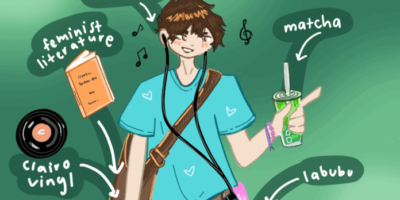With the 2011 edition of the Waterloo Baja SAE car about to be unveiled, I have been asked to write about my Baja SAE experience from 1992. The Baja is one of the SAE-sanctioned engineering competitions that 4th year students can undertake as part of their curriculum. It involves designing, building, testing, promoting, and ultimately racing a small-scale, off-road prototype vehicle. The competition is three days of tests and events ranging from static evaluations to dynamic tests such as acceleration, top speed, skid pull, hill climb, and maneuverability events. It all accumulates on the last day with a grueling four-hour endurance race.
Looking through the Waterloo Baja SAE website (http://www.eng.uwaterloo.ca/~baja/) I am struck at how much more professional the team has become compared to my time: A larger, more organized team able to do a more thorough job on all aspects of the project. However, the basic formula remains the same to this day: build an off road car using a spec engine that satisfies the often conflicting needs of safety, performance, and durability.
I had set my sights on the Baja competition almost as soon as I started at Waterloo. Being a pro motocross racer at the time, the Baja project was easily the most appealing way to accumulate some credits. However, the rigors of third year had drained the life out of most students so it was a tough sell to recruit. In the end, the 1992 Waterloo Baja SAE team consisted of just four members: myself, Steve Watts, Mike Doupe, and Rob Wolf.
We were on a shoe-string budget as the economy was deep in the dumper and WEEF was in its infancy. Fortunately, our skill set was strong. I had access to the nation’s top off road car racers for advice, Mike had extensive small engine repair experience, and Rob and Steve had related automobile manufacturing and repair backgrounds. Consequently, it was divide and conquer. I was the chassis man, Mike handled the drive train, Steve owned the seating and controls, and Rob was responsible for ensuring we met the safety requirements.
It was a ton of work, but we were able to meet all of the required milestones (barely) such as getting the design brief submitted, welding the chassis tubes, attaching suspension and wheels, and mounting the drive train just to name a few of the bazillion tasks that needed to be done. Of course many things did not go as planned. A classic example was the transmission. Mike designed and constructed a custom transmission box complete with an internal differential. Very cool indeed except nobody stopped to make sure we were driving the clutch the correct direction. It was one of the more deflating setbacks, but like any good team of engineers we did the “duct tape and bailing wire” thing by winding a custom clutch spring and we were back in business.
Finally, one sunny day in May, the car was ready for its maiden voyage. Like kids at Christmas, we rolled the car out behind engineering and fired it up. It was the moment that made it all worthwhile – the car was a blast to drive! We took turns zipping up and down ring road, across the railroad tracks, over the grass berms, and around the parking lot where E5 now sits. Security eventually paid us a visit and requested we stop buzzing people on ring road, but we now had renewed energy to get the car ready for the competition.
The 1992 Midwest Mini Baja competition was held in Milwaukee and we arrived on the Friday morning ready to go. We were definitely a rag tag group. Many of the 70+ teams from across the US and Canada had substantially larger budgets than us, with box vans, awnings, large tool chests, welding equipment, and other amenities that made our basic pickup truck setup look anemic. Friday involved tech inspection and static judging, which went surprisingly well. This allowed us to retire early for some much needed sleep. The constant flashes of other teams welding throughout the night in the hotel parking lot was surprisingly reassuring as we knew our car was ready to go while other teams struggled just to get their cars together.
Saturday brought the dynamic contests. Tennessee Tech’s entry became the obvious favourite right from the start – they had built a car that was smoking everyone else. But we kept plugging along, never winning any competition but far from being the worst.
Sunday was the endurance race event. Everyone raced together on a motocross track for 2 ½ hours and the results were worth almost half the point total. Our car proved to be a work horse. Not the fastest; it kept going strong until the end. It even survived a double end-over-end flip by one of our more enthusiastic drivers! At the finish, the Tennessee Tech car crossed the line first, cementing a dominating win. However the big surprise came at awards ceremony Sunday evening. We had no expectations and based on our visually low key effort we were way under the radar. To the surprise of many (and dismay of some high budget teams) the University of Waterloo entry was announced for 4th place overall. Short on sleep and having ingested a quantity of beer by this point, we sure whooped it up!
In the following weeks a re-tallying of the results (and I believe some belly aching by a couple of big name US schools) dropped us to 7th overall officially. But at that point it mattered little to us. We had exceeded all of our expectations in the competition. It was by far our most challenging yet memorable time at UW and it taught us real world engineering skills that have proved invaluable in our working lives. These are the same types of challenges and rewards that await the 2011 team, as they have for every team before them. I wish good luck to the team in Peoria in June and have one request – give ‘em hell and have fun!




Leave a Reply